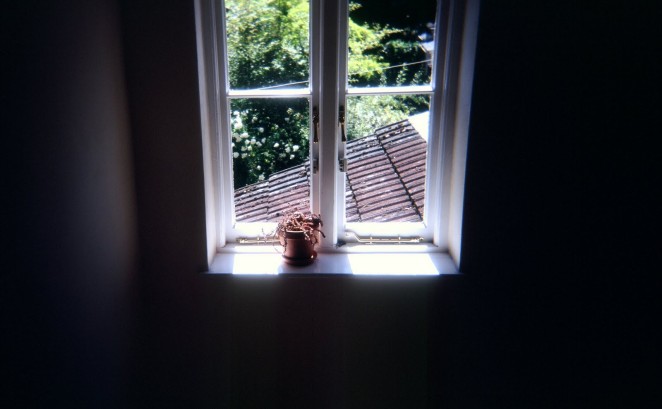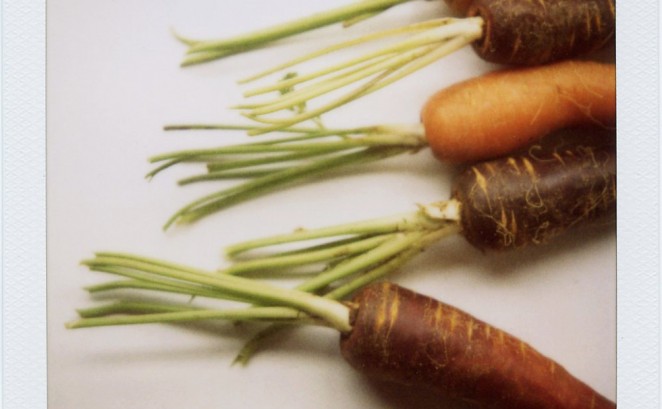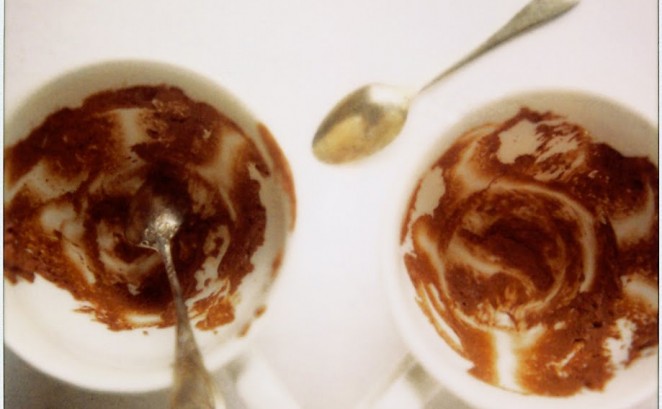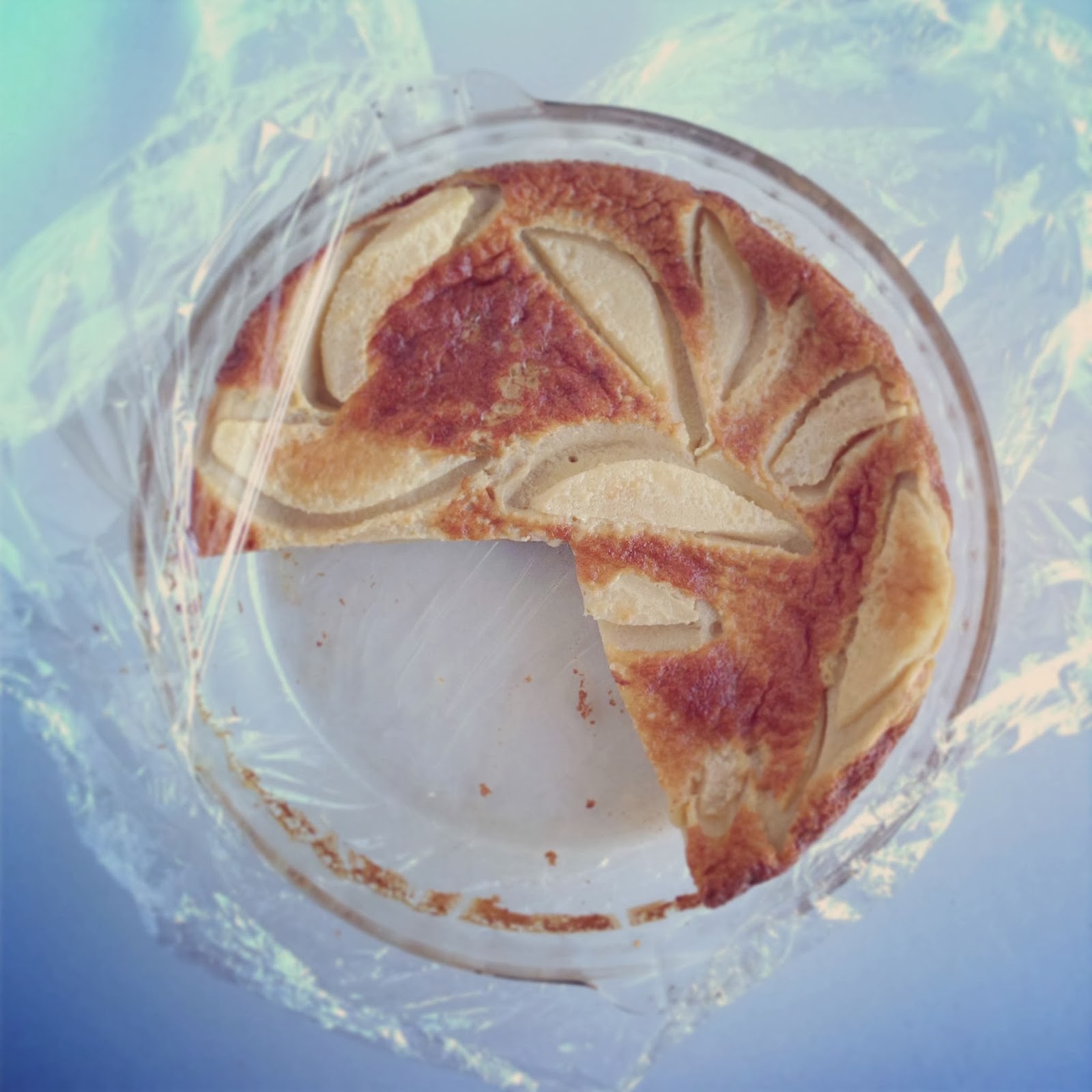Tag: paris
It made an impression
I had to get a new computer last week, one of few life events with the power to make a person feel both elated and completely bankrupt. After I brought it home, while I waited for my blood pressure to stabilize, I combed through the files that had been on my old computer and happened to find a document that I had forgotten, a recipe for a brown sugar clafoutis with pears. BROWN SUGAR CLAFOUTIS! WITH PEARS! I made the clafoutis last week, and again yesterday, and then I hustled over here to tell you about it with an oddly colored iPhone photo of my leftovers.
I had clafoutis for the first time when I was 23. It came to the table in a skillet the size of a salad plate, and where it met the pan, it rose up like an aspiring souffle. It made an impression.
I was working in France that year, teaching English in a public school outside of Paris. It was a very part-time gig with very part-time pay, and most nights, I cooked at home, in the studio apartment I rented in the 11th arrondissement, on a two-burner stove in an alcove between my bed and the front door. My landlord and his wife, who lived next door, told me that they played a game of guessing what I was cooking each night (tomato soup? ratatouille? bizarrely spiced packaged tofu burgers from Naturalia, the health food store?), based on the smells that filtered through the wall between our apartments. But when I was out in the neighborhood, I liked to read the menus of restaurants I passed, and I kept a list of the ones that looked good, for when friends or family came to visit.
My dad came in mid-May – this was 2002 – about two weeks before my work contract was up. Some days, we went to museums and walked around, but on the days when I was working, we would meet up later, for a drink and dinner. He was always waiting for me on the terrace of one of the cafes on Place de la Bastille, waving his book of crossword puzzles to catch my eye, wearing the khaki fly fisherman’s vest that he wore everywhere, even in Paris. We would order glasses of white wine and eat salted peanuts and try to eavesdrop on other patrons, and then we would go somewhere for dinner.
The clafoutis came midway through his stay, at a restaurant called Le Repaire de Cartouche. I had wanted to eat there for months. It was in my neighborhood, a small split-level bistro trimmed in dark wood and faded murals. I had made a reservation for eight o’clock, and we were seated in the upper room. By local standards, we were eating early, and the place was barely awake. The dining room was otherwise populated only by an elderly couple in the corner. The waiter set down a ceramic pot of rillettes and a basket of warm bread, and we ordered a carafe of wine. We both ordered fish, and then we decided to share a rhubarb clafoutis.
I had read about clafoutis in a cookbook, and I knew that it was from south-central France, a cross between a baked pancake, a flan, and a soufflé, usually dotted with cherries. It’s not fancy, and it’s not really restaurant food. It’s grandmother cooking, a dish you serve not to impress people, but to feed them. But here it was on the menu of a bistro in Paris, so we ordered it.
It goes without saying that it was beautiful, the way the custard rose at the edges and rumpled back onto itself. We tore into it. It was creamy but light, the rhubarb stewed nearly to jam. My father scooted his chair closer to the table, and I don’t think we spoke at all while we ate it, not until the server came to clear away our plates.
I’ve made a lot of clafoutis in the years since, some of them pretty bad. The basic ingredients are milk, eggs, sugar, flour, and fruit, but depending on the proportions, clafoutis can wind up bland, too sweet, or with the textural appeal of a rubber band. Even among the good ones, there are different styles: some are cakey, while others lean closer to custard. I like mine in the custardy vein, with just enough flour to bind the batter. Actually, you could call the recipe that follows a Brown Sugar Baked Custard with Pears. I started to, but it screwed up my story about the rhubarb clafoutis, so clafoutis it is. You do whatever you want.
Clafoutis seems to have been designed for summer fruit: berries and cherries and sliced stone fruits, anything soft and juicy. In late spring, stewed rhubarb is nice. But I also like to make it in the cold months, with pears. I’ve written before about a clafoutis recipe, and for a while, that was my usual one. It was sweetened with regular granulated sugar, as most are. But a few years ago, I tried an experiment: I had bought a giant bag of brown sugar on sale, and I decided to use it in a clafoutis. Whizzed in the blender, the batter turned the color of coffee with milk, and as it baked, the kitchen smelled like butterscotch. The custard was firm but silky, a texture I want to call squidgy, and had a darker, caramelly sweetness that felt particularly right with pears. It’s nice warm, but if I were you, I’d try to wait until it’s cold – I mean really cold, fridge-cold. I like it best the morning after it’s baked, actually, as a dessert after breakfast. And now you know all my secrets.
Happy week.
P.S. Go drink a New York Sour.
Brown Sugar Clafoutis with Pears
I use golden brown sugar here, because it’s what I usually have, but if you have dark brown sugar, go ahead and try it. And then let me know how it is. Also, I know this seems like a lot of sugar, but trust me.
Preheat the oven to 375°F. Butter a 9 ½-inch pie plate and dust it lightly with granulated sugar. Shake out any excess.
Peel and core the pear, and slice it thinly. (I cut mine into 12 to 14 slices.) Arrange them on the bottom of the prepared pan.
In the jar of a blender, combine the milk through flour. Blend on high speed for 1 minute (stopping once, if needed, to scrape down any flour that may stick to the sides of the jar). Pour the batter over the pears.
Bake until the custard is puffed and golden brown and a tester inserted into the center comes out clean, 30 to 35 minutes. Cool on a wire rack. The custard will deflate a little as it cools.
Serve at room temperature or – my preference – chilled.
Yield: 6 servings
October 19

I come from a family that goes to church only on occasional Christmas Eves, but somehow, I have come to love the feeling of being inside a church. I like the high ceilings, the wood and the stone and the gold leaf, and I like them best when they’re empty. There’s no other silence like it. My favorite church is in Paris, and it’s called Saint-Sulpice. I first loved it because my grandmother loved it, but now I love it because I do. I never forget to go to Saint-Sulpice. I usually go on a weekday, when it’s quiet, and I make sure that I have some coins on me, so that I can light a candle. My grandmother used…
Read moreOctober 22

I sat down to write this post last night at a kitchen table in Edinburgh. My friend Gemma was making barley soup, and Christophe was at the sink behind me, doing the last dishes from breakfast. If you had told me three weeks ago that I would be in their kitchen last night, I would have looked at you like you’d grown a second head. For once, I like being wrong. We’ve been talking about a feeling that sometimes comes with plane or train travel, and maybe the best name for it is Bonus Time. You’re in the plane or the train, and you can see the world outside the window, and you’re hurtling through it, but it’s very far…
Read moreOctober 15

Hi, friends. I’m in Paris now. I know I just typed that as though it were nothing, but what I meant was: I’M IN PARIS NOW! That sentence should always be written in all caps, with an exclamation point. I took the train down from London on Wednesday, and I’ve been staying with a friend. From where I’m sitting on the pullout sofa in her living room, I can hear a moped in the square outside and Night Moves on the stereo in the kitchen. She and her husband are sitting in there, at the counter. He’s doing a crossword puzzle, tapping his fingers in time. They’ve been good to me. I shot a whole roll of film in twenty…
Read moreYou’re lucky, she told me.

Hi, friends. This is not the post I had expected to write next. In my head, there were going to be cheers, an obscene number of exclamation points, and maybe a picture of the evening street outside our apartment in Paris. But due to sad and unforeseen circumstances, our Paris Diary project has been postponed. I don’t know how I even managed to type that sentence, because I hardly believe what it says. Your support for this project blew me away, and I can’t tell you how sad I am. I was due to fly out of Seattle this past Wednesday, go to London to see my friend Brian, and then take the train down to Paris on Sunday. Because…
Read moreParis Diary

I first met my friend Maria in 2005. She had a blog then called port2port – maybe you remember it? – and I can’t remember who found who, but at some point, we started reading each other’s sites. She lives in Portland, Maine, but that fall, she came to Seattle to visit a friend, and we went out for doughnuts and had a drink at the Alibi Room, my favorite bar back then. I was nervous to meet her, because I admired her: her photography, her style, the quiet way she writes, the details she notices in her daily life. I remember feeling amazed by how creative she was, by the fact that she made a living through creative work.…
Read moreShe got out a skillet

I should begin with a confession: I’m not in Thanksgiving mode yet. Who knows. It’s weird. This holiday sort of sneaks up, I’ve noticed, and then it’s quickly eclipsed by Christmas, which is sad, since Thanksgiving is our only national holiday devoted wholly to eating. This year, we’re heading to New Jersey to visit family, and I will almost certainly make cranberry chutney and probably a chocolate pecan pie, but it’s been hard to plan from a distance. Thanksgiving of 2010, I apologize. I’ll do better next year. On the upside, I ate almost two pounds of carrots today. I’m not sure why, but I keep thinking about my host mother. I haven’t seen her for ten years, but still,…
Read moreA nasty habit

I have many important things to tell you. 1. I’m doing a podcast! I intended to tell you about this a week ago, but there’s been an illness in my family, and I’ve been away, and it hasn’t been a lot of fun, so, you know, let’s talk about that podcast. It’s called Spilled Milk, and I co-host it with my friend Matthew Amster-Burton. Every time we record an episode, Matthew makes me laugh until I snort, cry, hyperventilate, and/or hoot like an owl, and I hope our show does the same for you. The first episode is on the topic of fried eggs, and you can listen or download it – free! – through the Spilled Milk website, or…
Read more

